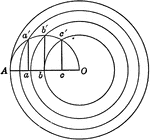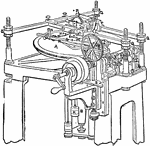Clipart tagged: ‘Dividing’

Dividing Circle into Equal Parts by Concentric
Circle divided into equal parts by concentric circles.

Dividing Engine
"The plate A is 46 inches in diameter, and is composed of gun metal. These were put on by original graduation,…